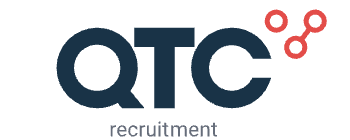Geschreven door Rinesa - 6 Minuten leestijd
The importance of focusing on soft skills for talent retention

Talent retention, combined with a talent shortage, is becoming a big problem for businesses, with the issue appearing not to discriminate against industry or sector.
A recent report by a leading global workforce solutions company found that 81% of large and medium sized businesses are struggling to hire, with job roles focussed on IT and data, and operations and logistics reported as the hardest positions to fill.
The issue isn’t just at middle management or junior levels however, a recent McKinsey report suggested that fewer than 30% of organisations can find the right C-Suite leaders and that newly hired executives can take too long to adapt to senior roles. The costs of hiring the wrong person especially in senior and C-Suite positions can be hugely costly to businesses, not just financially but reputationally too.
What can organisations do to make sure they hire the right talent and retain it?
There are four main challenges in attracting and retaining talent that are transferrable across all sectors and industries, these hurdles include expectations for higher salaries, career progression and pathways, burnout and wellbeing, and geographical location.
Geographical location is slightly different to the other three but equally important, if not more so. Organisations need to be aware of where the talent in their sector is based. In the life sciences industry for example the South-East is the home to 50% of the UK’s talent in the sector. This is where the highest number of life science R&D organisations, working in the very hi-tech areas such as therapeutic proteins (genetically engineered versions of natural products) are found, including London and specific hot spots in the region. The so-called Golden Triangle. Companies outside of the Golden Triangle may have to look at different talent retention strategies to attract and retain the best talent.
This reference to having a flexible talent retention strategy leads nicely into the other three challenges organisations are facing. Over the last couple of years employees’ expectations have changed, they now expect a certain level of flexibility in job roles. Hybrid working is becoming the norm.
This was shown in a report published in Fortune last year that found that nearly 76% of Apple workers were unhappy with the tech giants’ return to work policy, with 56% looking at new opportunities because of the office requirement. As well as clear pathways for career and salary progression employees are demanding a better work vs life balance and mental health is becoming an important consideration for candidates too.
Understanding the fundamentals of what employees are looking for from their careers and how their job impacts on their lives is instrumental in helping to improve talent retention and job satisfaction.
However, there are organisational considerations that need to be taken in to account too. Company lifecycle position, objectives and goals, culture, and the future plans for these areas not only influence the role a company is hiring for, but they are also important factors as to whether a candidate has the right personality traits to settle in an organisation.
These factors are driving the increased need for organisations to better consider softs skills (such as attitude to problem solving, ability to communicate and listen, adaptability, critical thinking and intuition, time management and interpersonal skills) when assessing a candidate’s suitability and not just hiring because of the hard skills listed on a C.V.
The power of KAI
Taking the time to consider personality type and soft skills will often result in a higher talent retention rate. While psychometric tools such as Belbin and Myers Briggs are commonly used tools, another approach is KAI, or the Kirton Adaption-Innovation Inventory. The founding hard science of KAI focuses on a persons’ problem-solving style. The pure measure the theory provides is ideal for the data and technology driven industries, like life sciences, especially for small to medium sized companies.
Simply put, KAI is a continuum on which people’s problem-solving style range from a preference for adaption, to “do things better”, to a preference for innovation “doing things differently”. The style can be complementary to an organisation’s goals and culture, or if opposed can clash, and this is what can cause retention and motivational challenges. There is no ideal position on the continuum, in general, as each problem-solving style has advantages and disadvantages given the problem needing to be solved.
If a business needs a very process-driven direction the best leader will most likely need to be more adaptive on the KAI continuum. The culture of the business should also fit this adaptive orientation of team-based decisions and focus on product improvement rather than innovation. A leader with an opposing, more innovative style could implement a culture that is disruptive to an adaptive workforce, and as such, negatively impact productivity and how content staff are in their job roles. The worst outcome being that employees may begin leaving as they will no longer feel an organisational fit.
An example of this cultural change vs company lifecycle paradigm is currently being seen at one of the companies involved in the research and manufacturing of vaccines during the Covid-19 pandemic. Originally the company attracted people drawn to its less structured, open approach. People are now leaving because with growth, as a result of the organisations success, comes the need for structured processes which is not their preferred environment.
To identify talent that can build the right culture, the executive search team and internal hiring team need to be aligned. This partnership should compare if the candidates’ soft skills match the aspired culture the company is trying to build.
The process can begin by asking boards, current leaders, and even employees, about the type of person the company needs, based on their preference for solving problems adaptively or solving problems innovatively. A job description written in a way to identify the types of problems the candidate needs to solve will likely bring forward several great applicants to choose from; individuals tend to shy away from the problems they would prefer not to solve.
Identifying the candidate with the right soft skills can be problematic, especially in today’s recruitment market which leans in some part on online search platforms, where the algorithms used concentrate largely on hard skills and experience. AI in time will be able to accurately find resumes of candidates who match the required hard skills which should give the hiring team more time to focus on the critical task of identifying the right candidate with the personality traits matching the company culture.
The interview stage is critical to identifying soft skills and if they have the right personality type and coping mechanisms to settle in your organisation. Insure though that the examples candidate provides are backed up by suitable references for that particular requirement.
Once you have found the right candidate, effective onboarding facilitates talent retention and working with high level leadership coaches is a powerful way to ensure new leaders immediately thrive in their new environment. Incorporate the learning from the candidate’s interview process to their on-boarding program is essential in simulating retention and their happiness in the role.
Lastly, understand where the candidate fits within the KAI continuum as companied to other C-suite members. This will be helpful integrating the new hire into the team and driving appropriate cultural change.
At QTC Recruitment, we understand the significance of finding professionals who have the right combination of technical expertise and interpersonal competencies. Our recruitment solutions in the Life Science industry can help you employ top talent with exceptional soft skills. Learn how we can assist your organisation in building a high-performing team here.
Also published on Businessleader.com
Want to stay informed about current Life Science and recruitment news on a regular base? Then register here for free.
